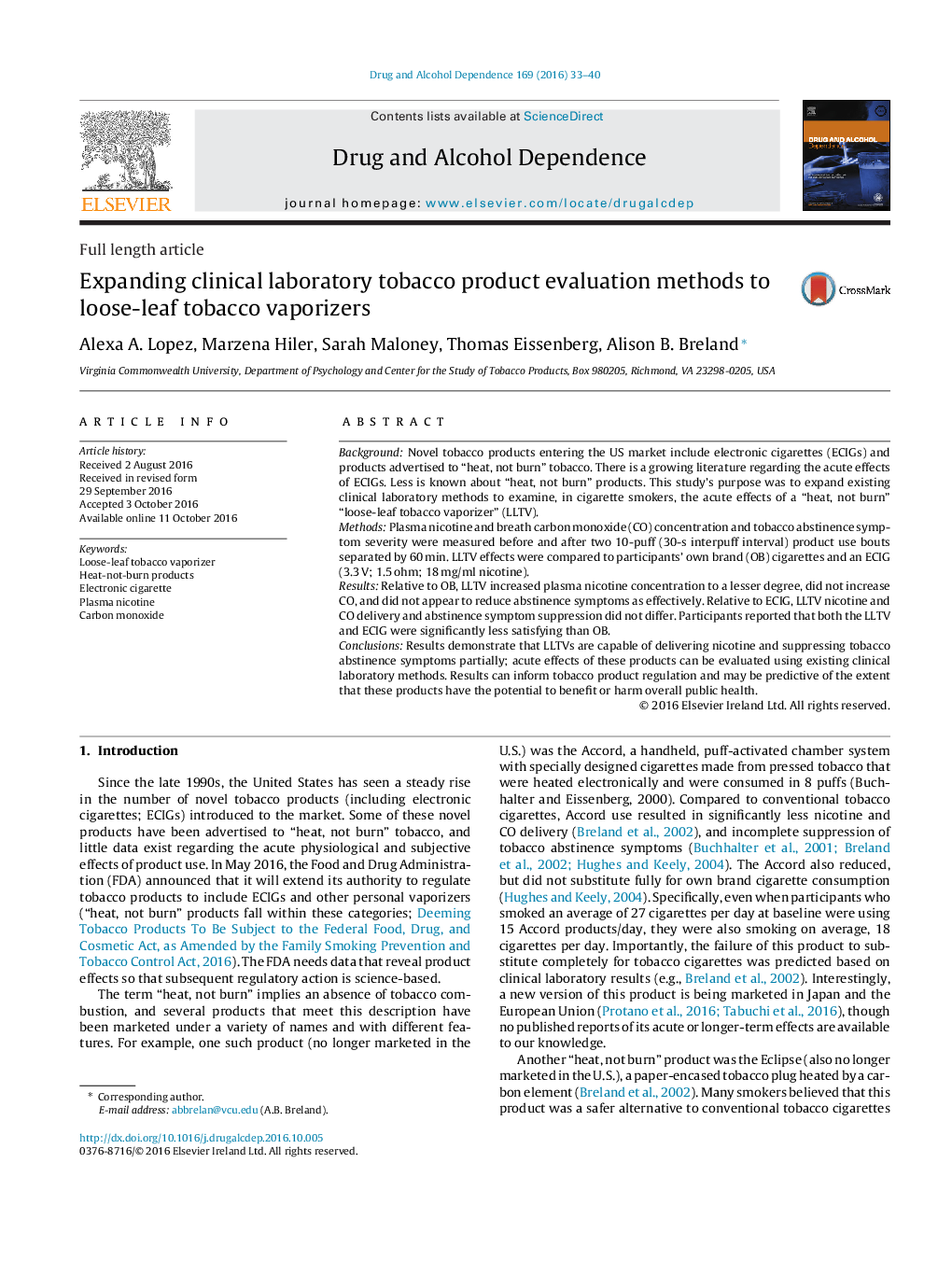| Article ID | Journal | Published Year | Pages | File Type |
|---|---|---|---|---|
| 5120411 | Drug and Alcohol Dependence | 2016 | 8 Pages |
â¢This is the first human laboratory study of a loose-leaf tobacco vaporizer (LLTV).â¢LLTV use significantly increased plasma nicotine concentration, but not CO.â¢LLTV use reduced tobacco abstinence symptom severity, but less so than a cigarette.â¢Both the LLTV and an ECIG were significantly less satisfying than cigarettes.â¢Laboratory methods can be expanded to “heat-not-burn” products.
BackgroundNovel tobacco products entering the US market include electronic cigarettes (ECIGs) and products advertised to “heat, not burn” tobacco. There is a growing literature regarding the acute effects of ECIGs. Less is known about “heat, not burn” products. This study's purpose was to expand existing clinical laboratory methods to examine, in cigarette smokers, the acute effects of a “heat, not burn” “loose-leaf tobacco vaporizer” (LLTV).MethodsPlasma nicotine and breath carbon monoxide (CO) concentration and tobacco abstinence symptom severity were measured before and after two 10-puff (30-s interpuff interval) product use bouts separated by 60Â min. LLTV effects were compared to participants' own brand (OB) cigarettes and an ECIG (3.3Â V; 1.5Â ohm; 18Â mg/ml nicotine).ResultsRelative to OB, LLTV increased plasma nicotine concentration to a lesser degree, did not increase CO, and did not appear to reduce abstinence symptoms as effectively. Relative to ECIG, LLTV nicotine and CO delivery and abstinence symptom suppression did not differ. Participants reported that both the LLTV and ECIG were significantly less satisfying than OB.ConclusionsResults demonstrate that LLTVs are capable of delivering nicotine and suppressing tobacco abstinence symptoms partially; acute effects of these products can be evaluated using existing clinical laboratory methods. Results can inform tobacco product regulation and may be predictive of the extent that these products have the potential to benefit or harm overall public health.
